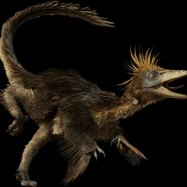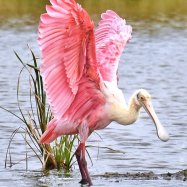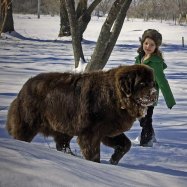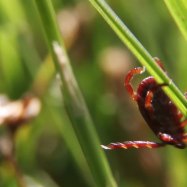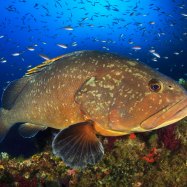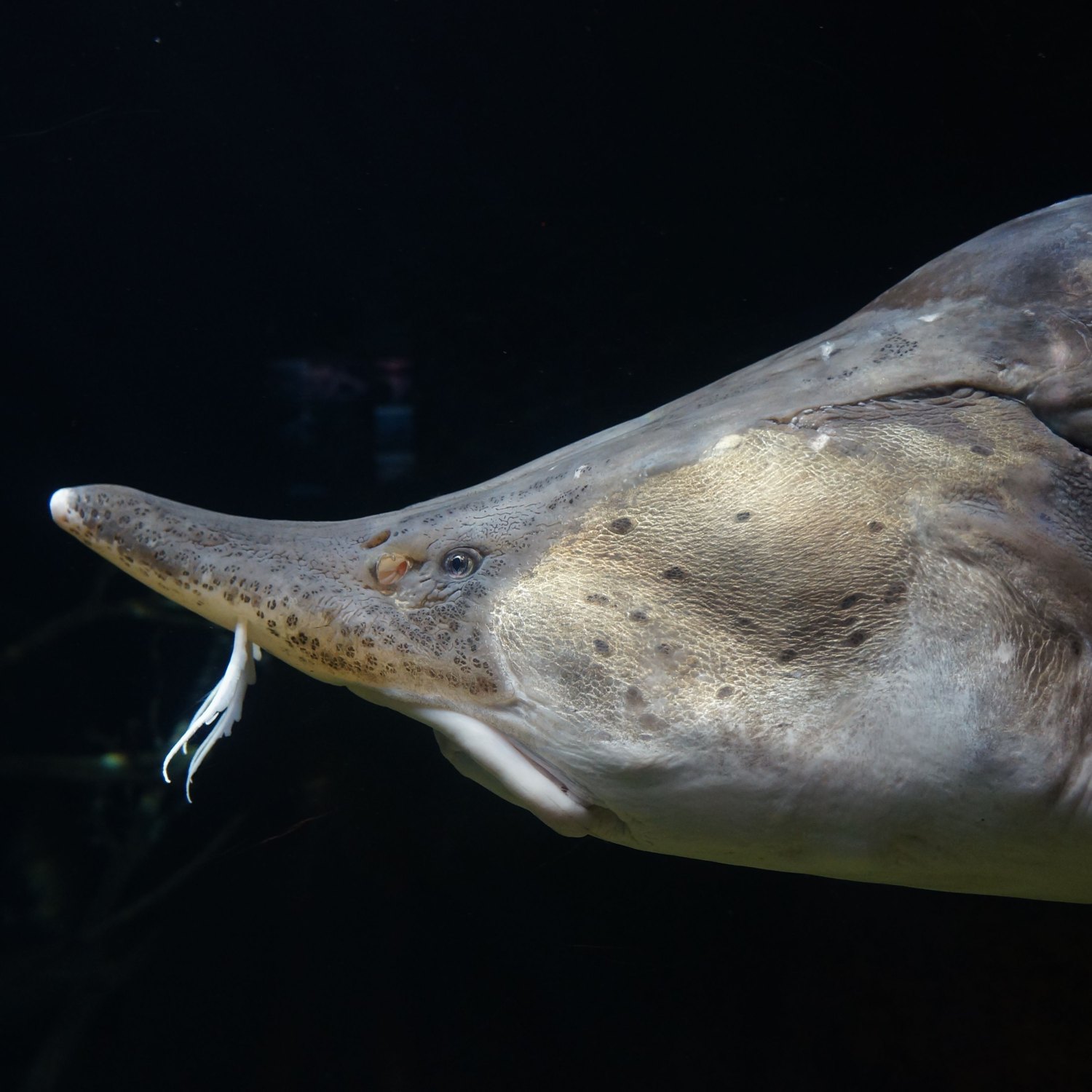
Beluga Sturgeon
Up to 7 meters (23 feet)
The majestic Beluga Sturgeon, found in Eastern Europe and the Middle East, can grow up to a whopping 7 meters long. Its long and cylindrical body, belonging to the Acipenseridae family, makes it a unique and fascinating creature. Sadly, due to overfishing and habitat destruction, these beautiful animals are now critically endangered. #BelugaSturgeon #endangered #EasternEurope #MiddleEast #acipenseridae
Animal Details Summary:
Common Name: Beluga Sturgeon
Kingdom: Animalia
Habitat: Freshwater, brackish water
The Majestic Beluga Sturgeon: A Graceful Giant of the Seas
Located in the Eastern Europe and Middle East regions, the Caspian Sea, Black Sea, and Azov Sea are home to a magnificent fish species that has captivated humans for centuries - the Beluga Sturgeon.Scientifically known as Huso huso, this ancient creature belongs to the Animalia kingdom, the phylum Chordata, and the class Actinopterygii. It is part of the order Acipenseriformes and the family Acipenseridae, making it a distant relative of sharks and rays.
But unlike its close cousins, the Beluga Sturgeon is not a fearsome predator Beluga Sturgeon. In fact, it is a peaceful and gentle giant that mainly feeds on small fish, crustaceans, and mollusks.
Let's dive deeper into the stunning world of the Beluga Sturgeon, and discover what makes it such a majestic and unique creature.
Habitat and Distribution
One of the most interesting features of the Beluga Sturgeon is its ability to adapt to different types of water habitats. It is found in both freshwater and brackish water, making it a versatile species.Most commonly, the Beluga Sturgeon is found in the Caspian Sea, Black Sea, and Azov Sea, with Russia, Iran, Kazakhstan, and Azerbaijan serving as its primary countries of origin. However, it has also been spotted in other surrounding bodies of water, such as the Danube river.
This widespread distribution is a testament to the hardy nature of this fish, which is able to thrive in various environments and conditions.
Appearance and Physical Characteristics
With a length that can reach up to 7 meters (23 feet), and a weight of up to 2,000 pounds, the Beluga Sturgeon is a true giant. Its body is long and cylindrical, with a slightly flattened bottom to help it swim smoothly in the water Bat.The coloration of the Beluga Sturgeon is one of its most distinctive features. Its dorsal side ranges from gray to blue-black, while its ventral side is a striking white. This color pattern not only makes it visually appealing, but also serves as a form of camouflage in the waters it inhabits.
Another notable feature of the Beluga Sturgeon is its mouth. It possesses a protruding and tubular upper lip, giving it a distinct appearance that sets it apart from other fish species.
Feeding Habits
Beluga Sturgeons are carnivorous in nature, and their main diet consists of small fish, crustaceans, and mollusks. Their advanced senses and specialized mouth make it easier for them to catch prey. They have a highly sensitive olfactory system, allowing them to detect and track prey from long distances.Once the prey is detected, the Beluga Sturgeon uses its modified mouth to suck in its prey, aided by the powerful suction force it creates. It then crushes the prey's shell or exoskeleton with its strong pharyngeal teeth before swallowing it whole.
Conservation Status
Despite its impressive size and widespread presence, the Beluga Sturgeon is facing a critical threat of extinction. The primary cause for this is overfishing, driven by the high demand for its caviar and meat.According to the International Union for Conservation of Nature (IUCN), the Beluga Sturgeon is listed as critically endangered. In the early 20th century, it was estimated that there were around 1,000,000 of these creatures in the wild, but now, that number has dropped to less than 100,000.
Fortunately, efforts are being made to protect and conserve this magnificent species. Countries such as Russia and Kazakhstan have implemented fishing bans to allow the population to recover. Additionally, international organizations are working towards establishing protected areas and implementing sustainable fishing practices to promote the survival of the Beluga Sturgeon.
Role in Culture and Cuisine
The Beluga Sturgeon has played a significant role in human culture and cuisine for centuries. In ancient times, it was considered a symbol of power and wealth due to its massive size and rarity.Its caviar, also known as beluga caviar, is considered as one of the finest and most expensive types of caviar in the world. It is often served in high-end restaurants and is a delicacy in many cultures, including Russian and Iranian cuisine.
However, with the current threat to the species, many have questioned the sustainability and ethical implications of consuming Beluga Sturgeon caviar. This has led to the rise of alternative sources of caviar, such as those from sustainable aquaculture farms.
Future Outlook
Despite the challenges it faces, the future looks promising for the Beluga Sturgeon. With conservation efforts in place and a growing awareness of its importance in the ecosystem, there is hope for this graceful giant to thrive once again in the waters it calls home.Through sustainable practices, responsible consumption habits, and further research on the species, we can ensure that the Beluga Sturgeon continues to grace our oceans and contribute to the diversity of aquatic life.
In conclusion, the Beluga Sturgeon is a remarkable creature with unique physical characteristics and behaviors. Its presence in the world's waters is not only integral to the ecosystem but also holds a great cultural and culinary significance. As we continue to learn more about this enchanting species, it is our responsibility to take care of it and ensure its survival for generations to come.

Beluga Sturgeon
Animal Details Beluga Sturgeon - Scientific Name: Huso huso
- Category: Animals B
- Scientific Name: Huso huso
- Common Name: Beluga Sturgeon
- Kingdom: Animalia
- Phylum: Chordata
- Class: Actinopterygii
- Order: Acipenseriformes
- Family: Acipenseridae
- Habitat: Freshwater, brackish water
- Feeding Method: Carnivorous
- Geographical Distribution: Caspian Sea, Black Sea, Azov Sea
- Country of Origin: Russia, Iran, Kazakhstan, Azerbaijan
- Location: Eastern Europe, Middle East
- Animal Coloration: Gray to blue-black on the dorsal side, white on the ventral side
- Body Shape: Long and cylindrical
- Length: Up to 7 meters (23 feet)
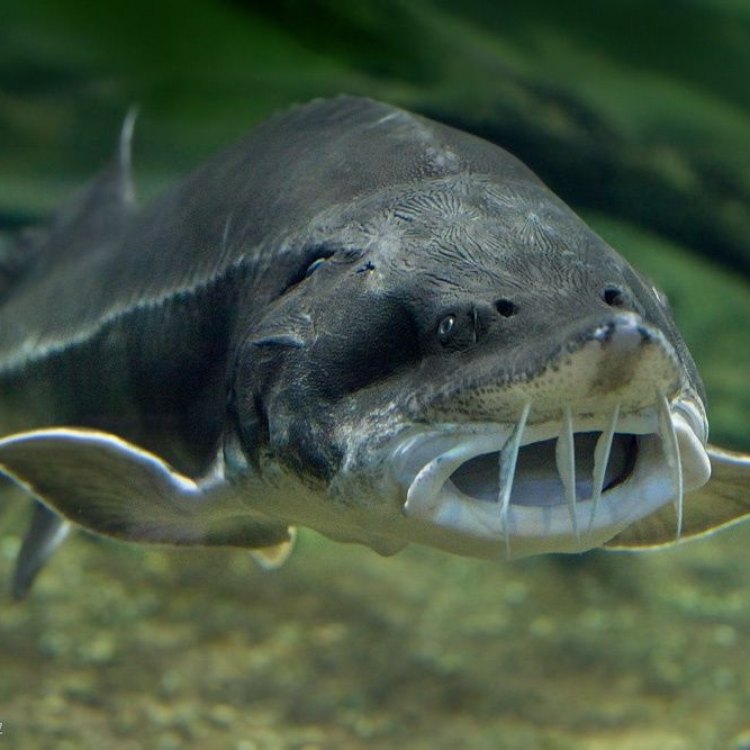
Beluga Sturgeon
- Adult Size: Around 5-6 meters (16-20 feet)
- Average Lifespan: 60-118 years
- Reproduction: Sexual
- Reproductive Behavior: Multiple males spawn with a single female
- Sound or Call: Produces grunting noises
- Migration Pattern: Migratory
- Social Groups: Solitary
- Behavior: Bottom-dwelling, slow-swimming
- Threats: Overfishing, habitat loss, pollution
- Conservation Status: Critically Endangered
- Impact on Ecosystem: Important role in maintaining the balance of fish populations in their habitats
- Human Use: Caviar production
- Distinctive Features: Large size, elongated body, large mouth, prominent tubercles on the head
- Interesting Facts: Beluga Sturgeon is the largest species of freshwater fish and is highly valued for its roe, which is used to make caviar.
- Predator: Humans
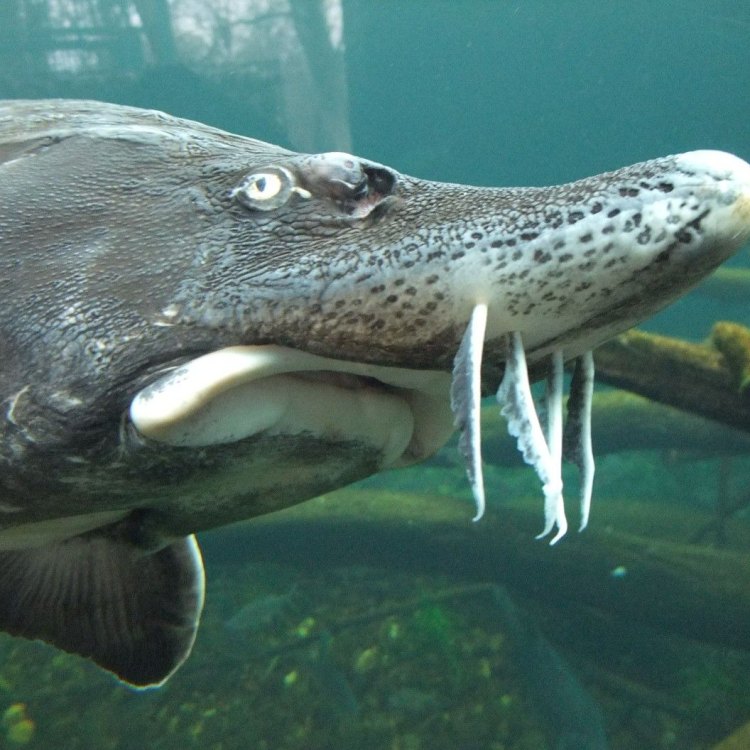
Huso huso
The Majestic and Threatened Beluga Sturgeon: A Profile of a Freshwater Giant
Under the clear waters of the world's largest rivers, a majestic creature roams silently. Its elongated body, adorned with prominent tubercles, gracefully glides through the currents. This is the Beluga Sturgeon, the largest species of freshwater fish and a vital player in maintaining the balance of fish populations in its habitat.Found in the Caspian and Black Sea basins, the Beluga Sturgeon (Huso huso) is a critically endangered species, with an adult size of around 5-6 meters (16-20 feet) and an average lifespan of 60-118 years PeaceOfAnimals.Com. Its immense size and longevity have earned it the nickname "the giant of the rivers."
Origins of the Beluga Sturgeon
The Beluga Sturgeon is believed to have existed since the time of the dinosaurs, with its evolutionary history dating back to over 120 million years. It is a member of the Acipenseridae family, a group of fish known for their cartilaginous skeleton and unique features such as bony plates and elongated snouts.
However, despite its ancient roots, the Beluga Sturgeon is now facing a grim future, with its population declining rapidly due to human activities.
Reproduction and Behavior
Beluga Sturgeons are sexual reproducers, meaning they require both male and female individuals to reproduce. However, their reproductive behavior is quite unique. During the spawning season, multiple male sturgeons will compete for the attention of a single female, often resulting in intense and aggressive behavior.
Once the eggs are fertilized, the female will then make her way to shallower waters, where she will dig a hole in the riverbed to create a nest to protect her eggs. A single female can lay up to 2 million eggs, which will then hatch after 10-14 days Biscuit Beetle.
As for their behavior, Beluga Sturgeons are bottom-dwelling, slow-swimming creatures. They prefer to live in deep, slow-moving waters, where they can easily scavenge for food, which mainly consists of small fish, mollusks, and crustaceans.
Threats and Conservation Efforts
Despite their large size and ancient history, Beluga Sturgeons are facing numerous threats to their survival, predominantly from human activities. The most significant threat is overfishing, as Beluga Sturgeons are highly valued for their roe, which is used to make caviar, a delicacy in many parts of the world. This leads to intense and often illegal fishing practices, significantly reducing the population of Beluga Sturgeons.
Moreover, habitat loss also poses a significant threat to these majestic creatures. The construction of dams, pollution from agricultural runoff and industrial development, and human interference in their natural habitats have all contributed to the decline of their population.
As a result, the Beluga Sturgeon is now classified as critically endangered on the IUCN Red List of Threatened Species. Efforts are being made to conserve this species, including the reduction of fishing quotas, the improvement of habitat conditions, and the promotion of sustainable fishing practices.
Impact on the Ecosystem
The Beluga Sturgeon may be an endangered species, but its role in its ecosystem is crucial. As a top predator in its habitat, it plays a vital role in controlling the populations of other fish species, maintaining the balance of the ecosystem. Its large size allows it to consume a significant amount of prey, reducing competition for resources among other fish species.
Moreover, the Beluga Sturgeon is also a vital source of nutrients for other animals, such as birds and other fish species. When it dies, its carcass sinks to the bottom of the river, providing essential nutrients to the bottom-dwelling organisms. Its role in the ecosystem cannot be underestimated, and its absence can have far-reaching consequences.
Human Use and Distinctive Features
The Beluga Sturgeon has been an essential species for humans for centuries. Its roe, also known as "black gold," is highly prized, and caviar produced from it is considered a luxury food item. This has led to severe overfishing of the species, and combined with the slow reproductive rate and habitat destruction, it has become critically endangered.
Apart from its caviar, the Beluga Sturgeon also has distinctive features that set it apart from other fish species. Its large size, elongated body, large mouth, and prominent tubercles on its head make it a unique and fascinating creature to observe.
Interesting Facts
Aside from its distinctive features and human uses, here are some other interesting facts about the Beluga Sturgeon:
- The Beluga Sturgeon is known to produce grunting noises, which are believed to be a form of communication during spawning.
- During the 19th century, Beluga Sturgeons weighing over 500 kilograms (1,100 pounds) were common, but now it is rare to find individuals weighing over 100 kilograms (220 pounds).
- In the past, the Beluga Sturgeon was found in other regions, including the Rhine and Danube rivers in Europe, the Aral Sea in Central Asia, and even the eastern United States. However, due to overfishing and habitat destruction, it is now only found in the Caspian and Black Sea basins.
- The Beluga Sturgeon's scientific name, Huso huso, originates from the Old Norse word "huse" meaning large.
Predator: Humans
Unfortunately, despite its size and strength, the greatest predator to the Beluga Sturgeon is us, humans. Our unsustainable actions, such as overfishing and habitat destruction, have pushed this magnificent species to the brink of extinction. However, there is still hope for its conservation, and it is up to us to take action and protect this ancient and crucial species.
In conclusion, the Beluga Sturgeon may be facing numerous threats, but it is a crucial species in the freshwater ecosystem. Its immense size, longevity, and distinctive features make it a fascinating creature, and its role in maintaining the balance of the ecosystem cannot be ignored. Through conservation efforts and responsible use of its resources, we can ensure that this giant of the rivers continues to thrive for generations to come.
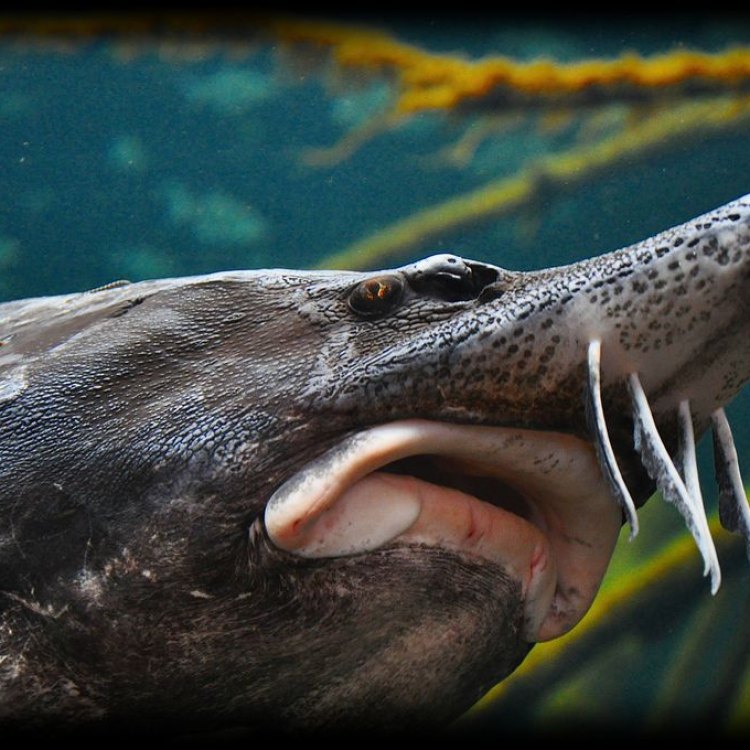
The Majestic Beluga Sturgeon: A Graceful Giant of the Seas
Disclaimer: The content provided is for informational purposes only. We cannot guarantee the accuracy of the information on this page 100%. All information provided here may change without prior notice.



